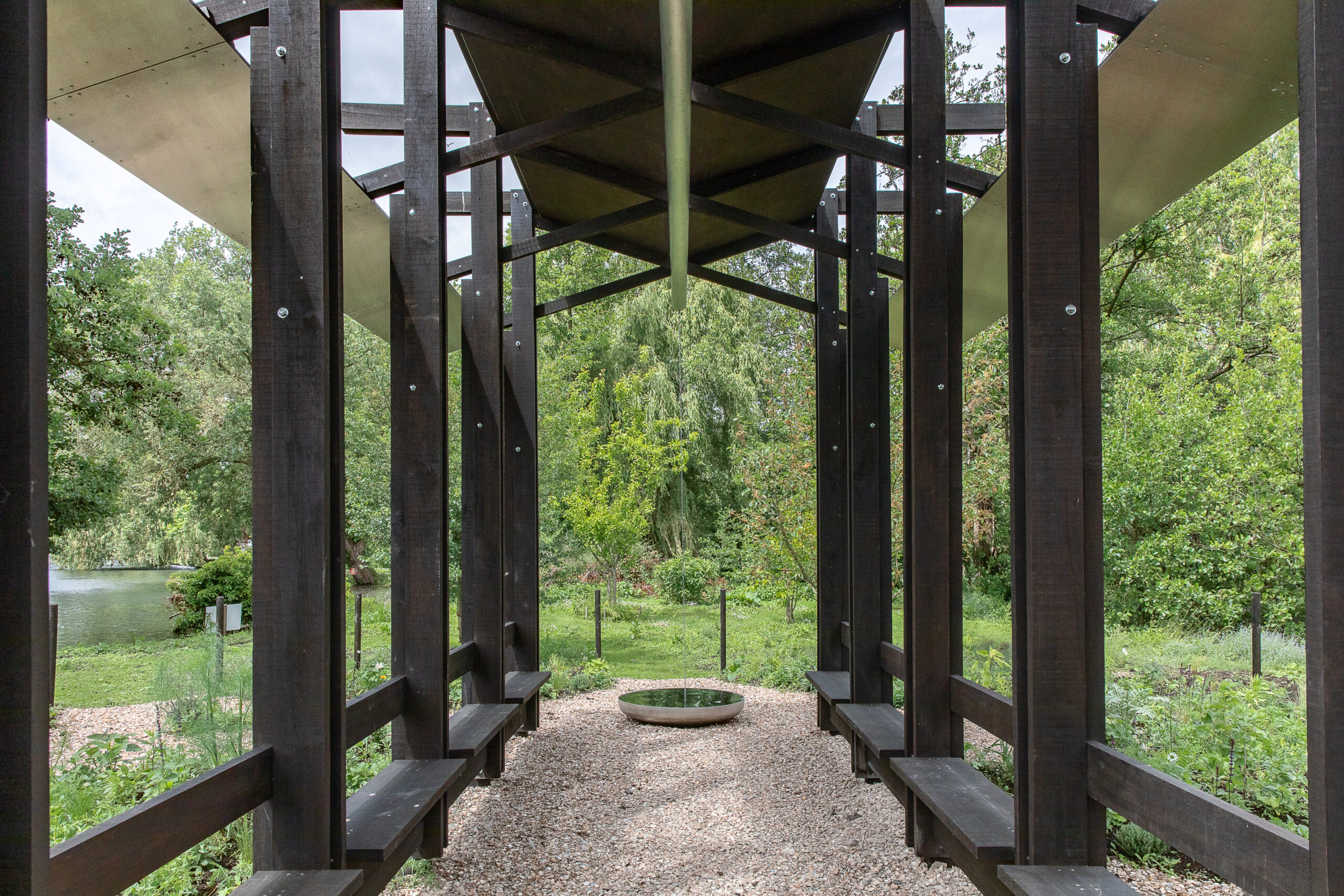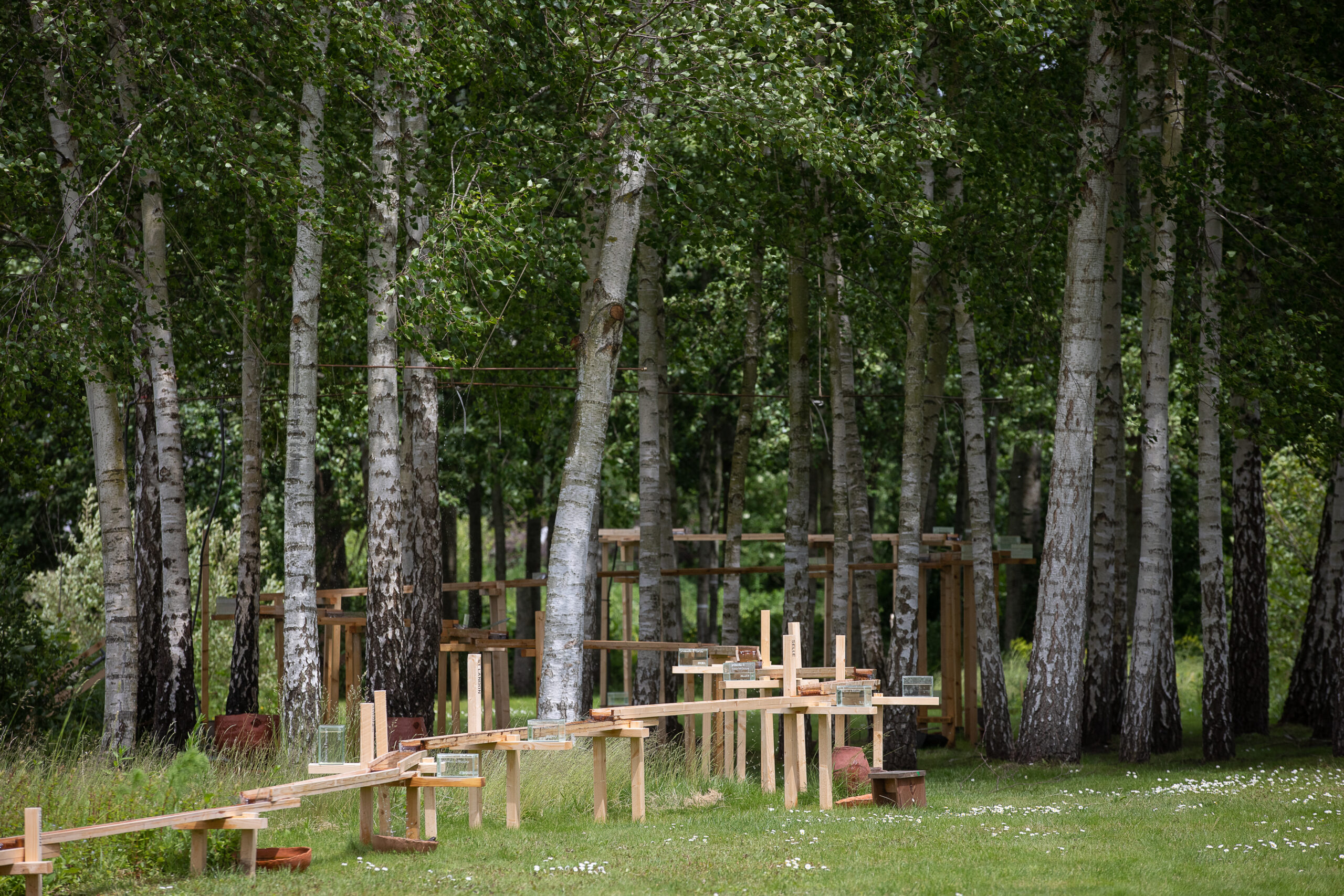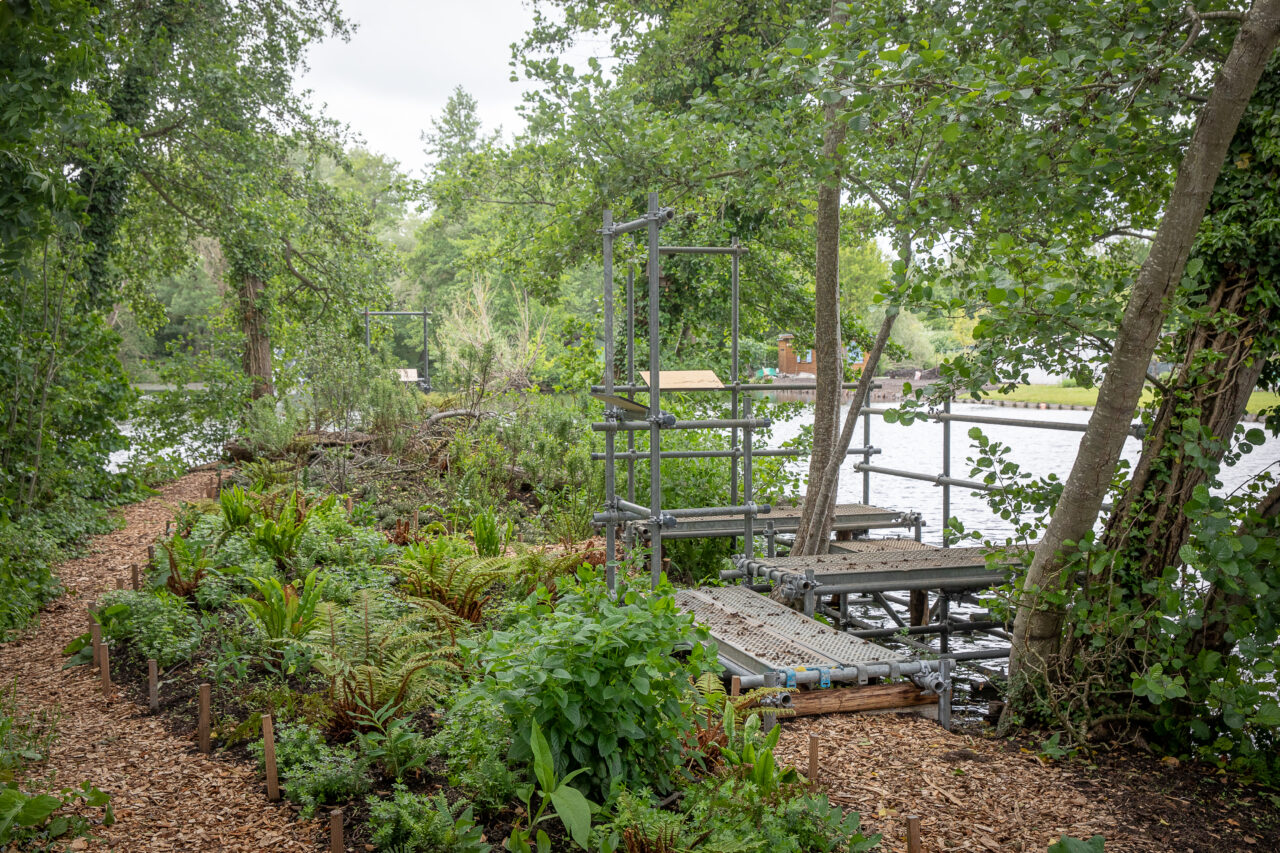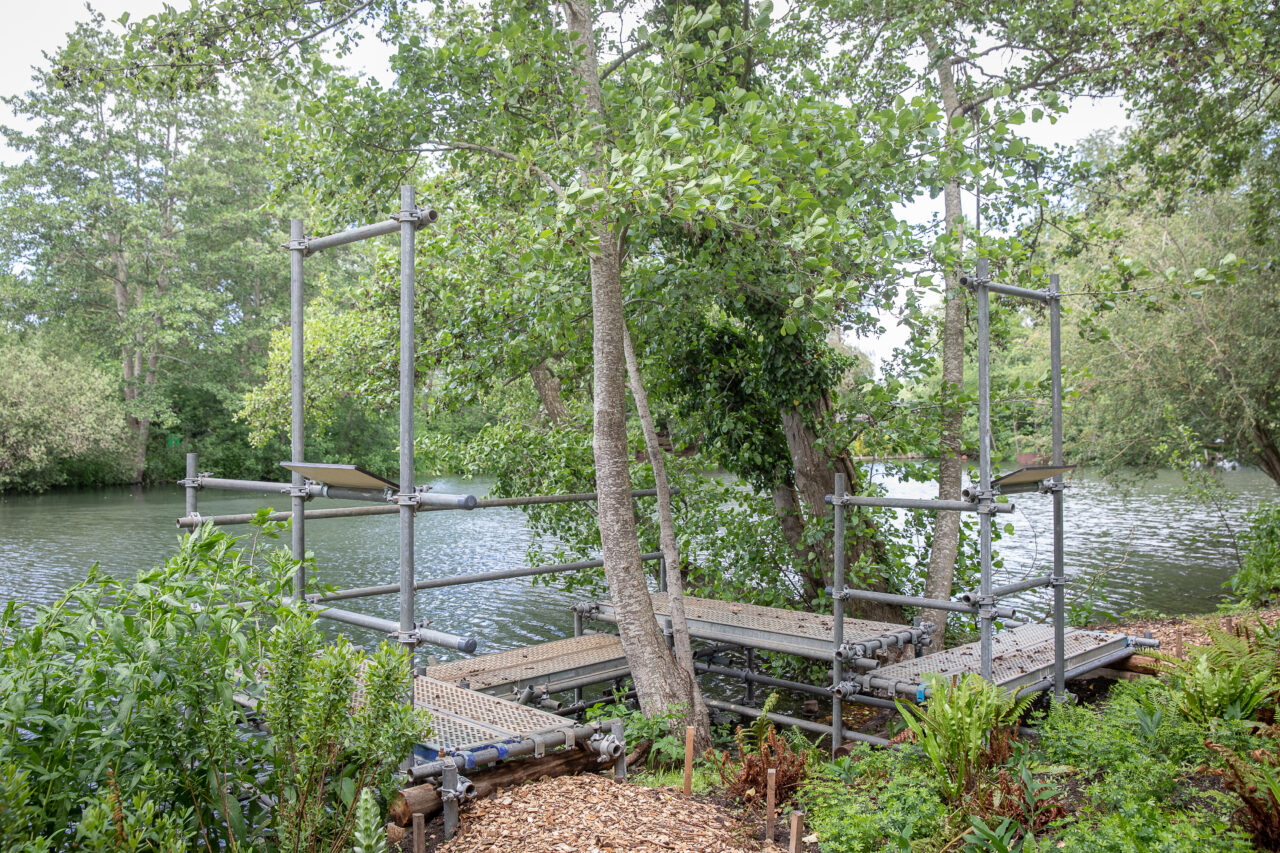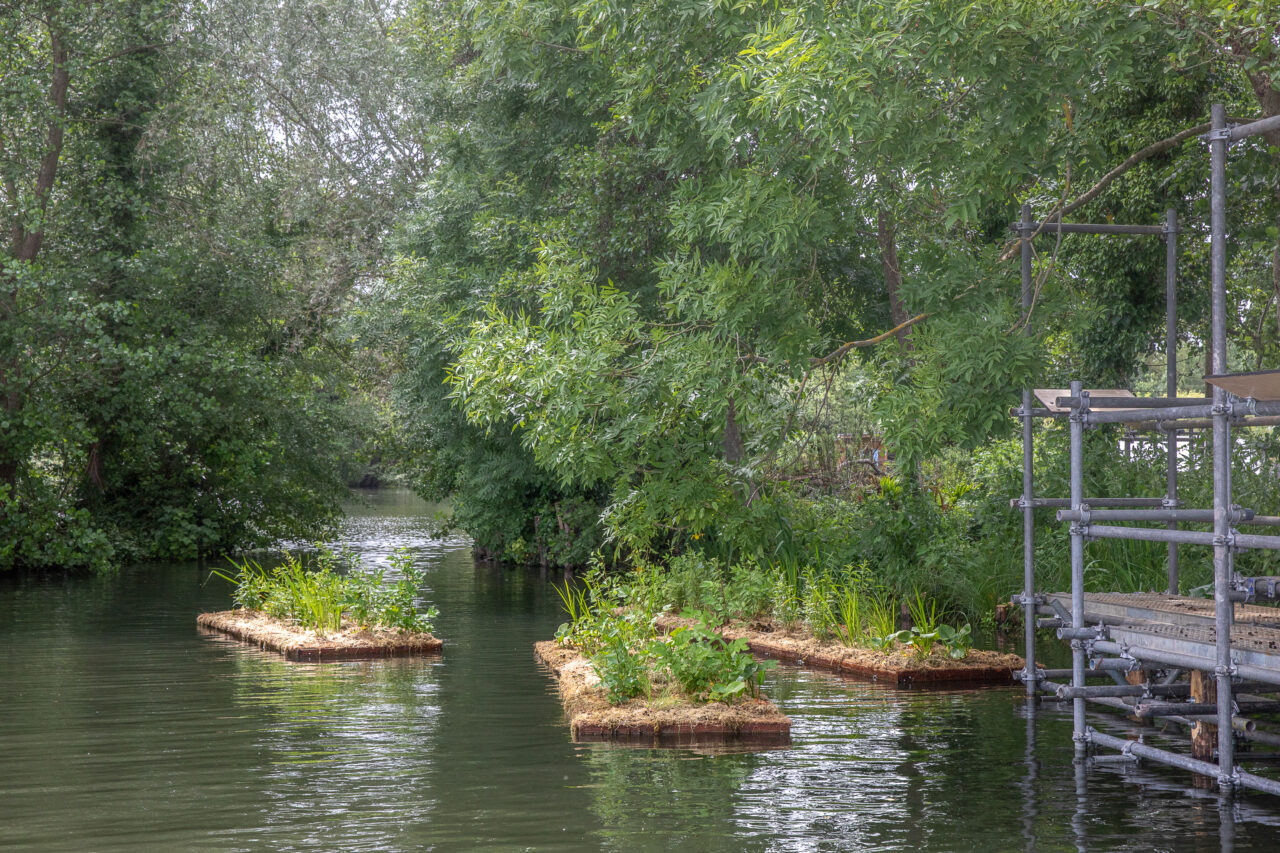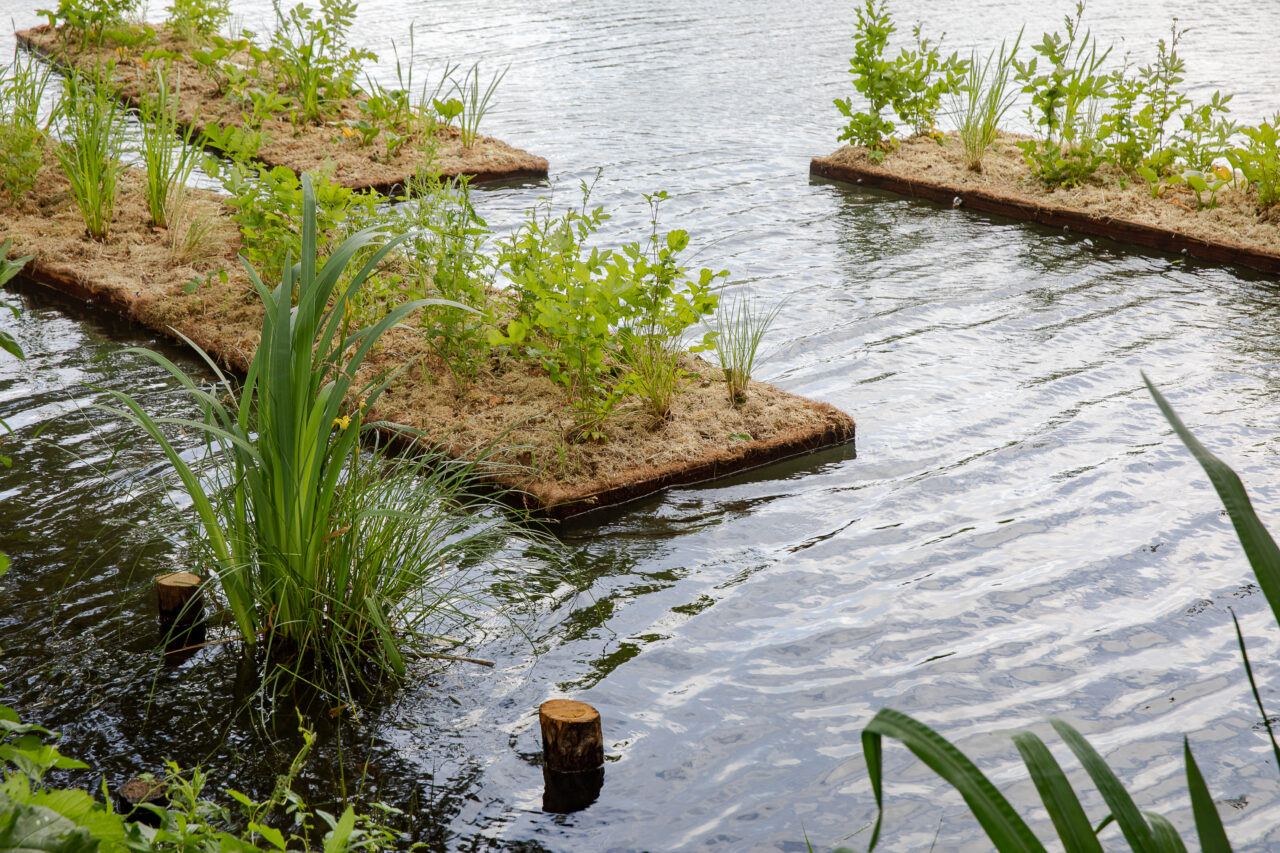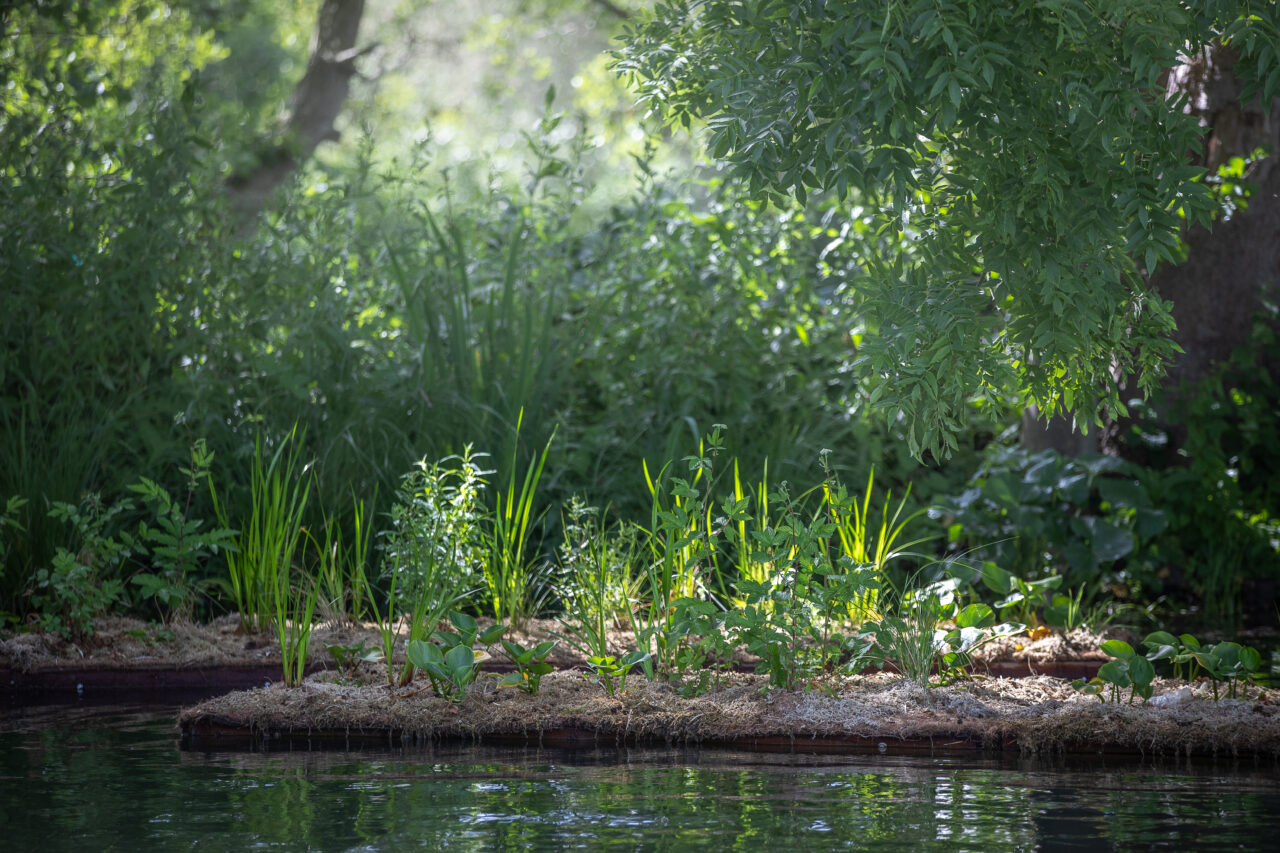1000 years : a garden of peat is a walk through time, where visitors can discover the various stages of the slow evolution of the peatland landscape: an ecologically valuable environment, a heritage site, but also a territory threatened by urbanization and climate change.
It is a garden of ecological succession: ponds with their aquatic plants, quaking bogs with mosses, meadows of colorful annuals, cushion-like peatland forests — all the way to the landscape’s renewal through the death of a tree and its pioneering recolonization. It is a cyclical landscape, where each biotope hosts its own specific flora and fauna.
Visitors are invited to follow a narrow, elevated path in a slow and respectful approach to a landscape that is both ancient and extremely fragile. Despite urban and environmental pressures, this landscape is not doomed to disappear — it has the capacity to regenerate, provided it is given the time.
This project is the result of a collaboration and co-design between Charlotte, Jean-Francois and several partners: Paul Casteleijn Hovenier B.V., Marjolijn Guldemond, Sander Huijzer, Jörgen Smit and Frans van der Horst for the boardwalks. Paul Casteleijn Hovenier B.V., Christophe Froment (Nova-flore), Marilu de Bies and Antoine Thevenet for the garden. Liesbeth Verhoeven (HelkantPlant) for the floating islands.



